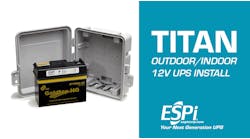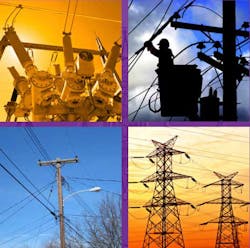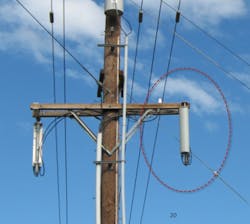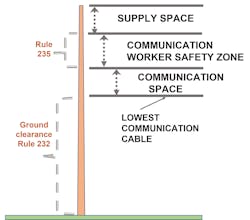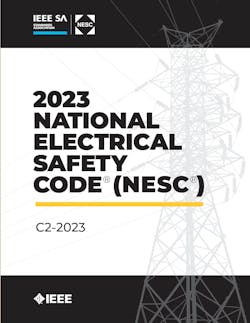Latest from Network Reliability
Get Ahead of the New 2023 National Electrical Safety Code® (NESC®)
Outside plant networks of communications and power grid installations across the United States follow the National Electrical Safety Code (NESC) for the safety objectives. In addition, utilities, state and local municipalities use the NESC as the basis for their joint use agreements which enable them to share utility space on poles, trenches and along rights-of-way. It even impacts the “make-ready work” that telecom industries/companies must do in order to pay electric utilities to connect their facilities and/or infrastructure.
The NESC was founded over a 100 years ago and has been in continuous use since August 1914. It provides safety rules to protect the public and those working in construction, maintenance, and operations of electrical supply and communications lines–specifically, those that stretch between the serving utility and the end customer’s property.
The 2023 NESC includes changes with new sections on grid-connected facilities such as solar farms and energy storage systems, updated wind/ice maps for pole strength calculations, consolidation of wireless clearances.
The NESC covers the communication lines along with the associated hardware and equipment in overhead and below ground distribution plants applicable to telecommunications facilities located between the Central Office and the attachment point on the customer’s building. It also covers the electrical supply power stations to the utility power service point for the customer. (See Figure 1.)
Most states require or expect compliance with the NESC, either the latest edition, or a specified earlier edition. Furthermore, with the exception of California, the provisions of the NESC become incorporated or reflected in the practices of the power and communication utilities operating throughout the United States. Although the NESC is intended to be a performance/safety code (i.e., not a “design/how” code), in many cases it represents the minimum standard or guidelines for the construction and operation of the local distribution outside plant lines and facilities.
In contrast, the National Electrical Code® (NEC®)2, not to be confused with the NESC, primarily addresses indoor and customer premise wiring.
It's Almost Here!
The soon-to-be-released 2023 NESC, which is published exclusively by the IEEE Standards Association (IEEE SA) and updated every five years to reflect the industries’ evolving technologies, will include several relevant technical and format changes. Let’s review some of the most substantial changes noted in this edition.
The 2023 NESC includes changes with new sections on grid-connected facilities such as solar farms and energy storage systems, updated wind/ice maps for pole strength calculations, consolidation of wireless clearances into the new Rule 238F, and numerous small but significant clarifications to help Code users apply the rules uniformly across the country. (See Figure 2.)
Updates Matter: Grid Connections, Grounding Updates, 5G Densification
There are several substantive changes to help ensure the code flourishes and remains practical and relevant over the next five years, keeping pace with rapid technological changes and user demands. Three important examples include:
The work on powering circuits solely for communications equipment recognized that various new powering architectures of span powering and Fault-Managed Power Systems (FMPS) are required to match the expanding demands of 5G wireless antennas and their associated equipment. The safe efficient use and distribution of energy to power the latest wireless equipment are essential to the successful and long-term viability and reliability of these communications services.
Read on for the portion not shared in ISE Magazine's July print issue.
Any powering scheme whether it uses physical fuses, protection devices, and/or software operational controls will need to detect faults or problem conditions in the powering circuit. It must then automatically, and rapidly, de-energize the powering circuits. Current rules require that these powering circuits in communications cables be maintained by qualified (trained) personnel. Their access to termination points will be restricted so that under fault conditions voltage on communications circuits shall be less than 400 V to the ground and that live parts will be inaccessible when the circuit is energized. There are debates currently within NESC working groups around the necessity for these cables to have a metallic shield and be effectively grounded.
There are several substantive changes to help ensure the code flourishes and remains practical and relevant over the next five years, keeping pace with rapid technological changes and user demands.
NESC Works
The NESC continues to evolve to keep pace with technology and deployment advances while staying true to its mission of safety. The changes in the 2023 Edition, when adopted, may have significant consequences for the construction, maintenance, or operation of the communications distribution plant.
These updates and new rules will help both employees and end users as CSPs continue to provide broadband wireline and wireless services to residential, commercial, and industrial customers.
REFERENCES AND NOTES
1. The National Electrical Safety Code® and the NESC® are registered trademarks in the U.S. Patent & Trademark Office, owned by The Institute of Electrical and Electronics Engineers, Incorporated (IEEE) https://standards.ieee.org/products-programs/nesc/process/.
2. The National Electrical Code® and the NEC® are registered trademarks in the U.S. Patent & Trademark Office, owned by The National Fire Protection Association (NFPA).
ABOUT THE AUTHORS
Dr. Trevor N. Bowmer, Ph.D., Consultant at Bunya Telecom Consulting and an IEEE National Electrical Safety Code Main Committee Member with more than 40 years of experience analyzing telecommunications networks and physical infrastructure products including international assignments in Canada, Mexico, and Saudi Arabia. Author of generic requirements on cable, equipment, and hardware for the communications industry as well as the Telcordia Construction Guidelines Blue Book covering wireless, fiber (FTTx), coaxial cable, and copper-based broadband networks For more information, please email [email protected].
Ernie Gallo is Director at Network Infrastructure Solutions, a division of Ericsson, Inc., and an IEEE C2 National Electrical Safety Code - Committee Member, Subcommittees SC2, SC4, SC5, and SC8. He has more than 40 years of experience in outside plant products, requirements, deployment, and electrical safety codes and standards such as the NEC and NESC. For more information, please email [email protected] or visit https://www.ericsson.com/en. Follow Ericsson on Twitter @ericsson.
For more information, please visit https://standards.ieee.org/products-programs/nesc/ to learn more information about the NESC and NESC Products. Follow the IEEE SA on Twitter @IEEESA. We welcome you to contribute to our efforts by joining the NESC.
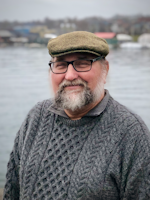
Dr. Trevor N. Bowmer
Dr. Trevor N. Bowmer, Ph.D., Consultant at Bunya Telecom Consulting and an IEEE National Electrical Safety Code Main Committee Member with more than 40 years of experience analyzing telecommunications networks and physical infrastructure products including international assignments in Canada, Mexico, and Saudi Arabia. Author of generic requirements on cable, equipment, and hardware for the communications industry as well as the Telcordia Construction Guidelines Blue Book covering wireless, fiber (FTTx), coaxial cable, and copper-based broadband networks For more information, please email [email protected].
For more information, please visit https://standards.ieee.org/products-programs/nesc/ to learn more information about the NESC and NESC Products. Follow the IEEE SA on Twitter @IEEESA.
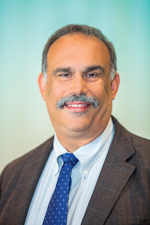
Ernie Gallo | Director at Network Infrastructure Solutions, a division of Ericsson, Inc.,
Ernie Gallo is Director at Network Infrastructure Solutions, a division of Ericsson, Inc., and an IEEE C2 National Electrical Safety Code - Committee Member, Subcommittees SC2, SC4, SC5, and SC8. He has more than 40 years of experience in outside plant products, requirements, deployment, and electrical safety codes and standards such as the NEC and NESC. For more information, please email [email protected] or visit https://www.ericsson.com/en. Follow Ericsson on Twitter @ericsson.
For more information, please visit https://standards.ieee.org/products-programs/nesc/ to learn more information about the NESC and NESC Products. Follow the IEEE SA on Twitter @IEEESA. We welcome you to contribute to our efforts by joining the NESC.
